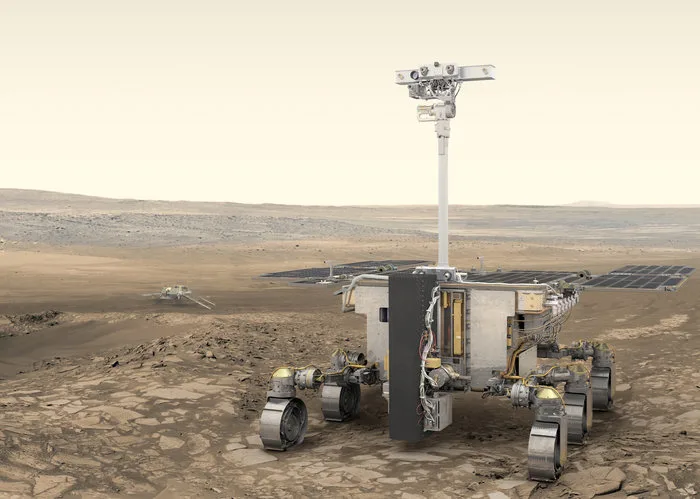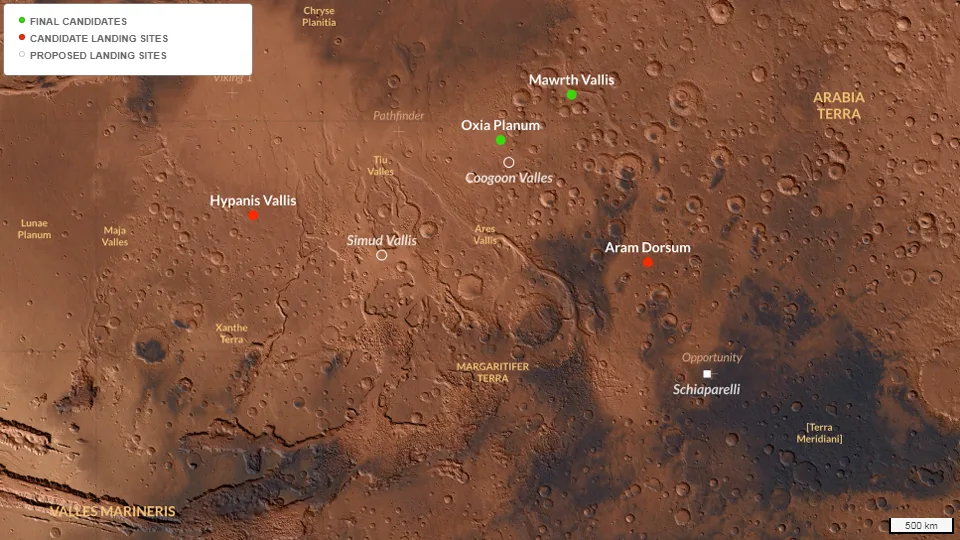
New Mars rover honours Rosalind Franklin, who mapped out DNA
Europe's new Mars rover has now been named for chemist Rosalind Franklin, who helped unravel the double-helix structure of DNA and thus pioneer the study of the basic building blocks of life.
The European Space Agency unveiled the new name for their ExoMars 2020 rover in a ceremony at Airbus, Stevenage, UK, on Thursday.
Out of over 30,000 entries, submitted from all 22 of the ESA member states, the selection committee chose to name the rover after DNA pioneer Rosalind Franklin.

Dr. Alice Bunn, the International Director of the UK Space Agency, announces the new name of the ESA's ExoMars 2020 rover. Credit: ESA/S. Corvaja
Building upon previous missions that showed us Mars was most certainly a place where life could have lived, in its ancient past - Spirit, Opportunity, Curiosity - this roughly golf cart-sized roving robot, which is slated to launch next year and arrive on Mars in 2021, is designed to specifically search the Red Planet for signs that life did actually live there.
Or, maybe... just maybe... that life actually lives there, right now.

An artist's conception of the Rosalind Franklin Mars rover. Credit: ESA/ATG medialab
For this, the rover is equipped with a drill, to bore down under the Martian surface. Unlike previous missions, though, the Franklin rover will go much deeper in its search, drilling down up to 2 metres beneath the ground to retrieve samples that scientists hope will contain the chemical building blocks of life.
According to the ESA, "This is crucial, because the present surface of Mars is a hostile place for living organisms owing to the harsh solar and cosmic radiation. By searching underground, the rover has more chance of finding preserved evidence."
So, who better to name this rover after, but the woman who was the first person to map out the DNA double helix, the very building block of organic life as we know it!
According to the ESA:
Rosalind Elsie Franklin was a British chemist and X-ray crystallographer who contributed to unravelling the double helix structure of our DNA. She also made enduring contributions to the study of coal, carbon and graphite. ESA has a long tradition of naming its missions for great scientists, including Newton, Planck and Euclid.
"This name reminds us that it is in the human genes to explore," ESA Director General Jan Woerner said. "Science is in our DNA, and in everything we do at ESA. Rosalind the rover captures this spirit and carries us all to the forefront of space exploration."
One important note about the naming of the ExoMars 2020 rover: Given that it has been named for a prominent woman scientist, who performed her important, ground-breaking work at time when few women received proper recognition for their discoveries, we really should avoid calling this robot "Rosy the Rover" would not be a respectable way to honour Rosalind Franklin.
So, in the tradition of the Hubble Space Telescope (named for astronomer Edwin Hubble), the Spitzer Space Telescope (named for astrophysicist Lyman Spitzer), the Compton Gamma Ray Observatory (named for physicist Arthur Compton), the Chandra X-ray Observatory (named for astrophysicist Subrahmanyan Chandra), and also the "Parker" Solar Probe (named after astrophysicist Eugene Parker), the proper way to truly honour Rosalind Franklin is to call this robot the Franklin Mars Rover.
As of now, the Franklin Rover is headed for one of two locations on Mars for its search for past (and/or present) life.

Of the various proposed and candidate landing zones for the ExoMars mission, two - Mawrth Vallis and Oxia Planum - are the top contenders for the final choice. Credit: ESA/ExoMars LSS
Mawrth Vallis was chosen because the region has one of the largest areas on the planet that contain exposed clay minerals which have undergone chemical weathering by water. Since these deposits were likely formed in the period when the surface of Mars was still habitable to life as we know it, somewhere around 3.8 billion years ago, it is an excellent location to search for buried evidence of life.
Like Mawrth Vallis, Oxia Planum contains one of the largest deposits of clay-rich rocks on the planet, and according to the ESA, these clay deposits were laid down at roughly the same time (3.8 billion years ago), but have only been exposed to the surface for around 100 million years.
The mission team will narrow down the final choice from these two, closer to the 2020 launch date.
Sources: ESA






